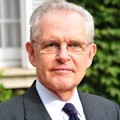Because we economists tend to view reality through the lens of economic models, but I did enjoy one of John H. Cochrane’s comments in his blog “Macro debates, the oped.”
For quite some time now, due to the recent crisis, I have been experiencing a lot of hesitation about these model-filtered visions. Cochrane, a University of Chicago economist, bases his comments on how the U.S. economy has been evolving: a 10% loss of GDP growth as a result of the crisis and an anemic recovery.

Cochrane finds this worrisome because without growth our children and grandchildren will not enjoy an improvement in standard of living. In addition, our governments will be unable to pay the ever-increasing cost of our health care and pensions. Furthermore, those who are most needy won’t once again gain access to opportunities and the U.S.’s economic and military power will continue to wither.
Magical Solutions and Broken Windows
And why is growth so low? Cochrane stresses the arguments offered by the New Keynesian models, i.e., that the problem is a lack of demand that could be resolved with expansive monetary and fiscal policies. But won’t pan out, says Cochrane, even resorting to political solutions that he labels “magical,” like assuming that government spending will spark economic recovery, no matter how it is financed. Neither should we count on the “broken windows fallacy,” he says. Any reader of this blog knows an important truth: It’s great for someone to break windows, because this of course stimulates demand. But what will one give up purchasing in order to pay for the broken glass?
Looking at the Supply Side
In any case, he says, “The models that may end up working won’t be able to generate the millions and millions of dollars in public spending that would be needed,” in order for the economy to recover growth. The alternative is not on the demand side, but rather on the supply side.
Supply did not cause the crisis, but it does hinder finding the way out. The loss of human capital after five years of unemployment, the uncertainty generated by politicians that have sparked a general reluctance to commit to long-term projects due to the fear that fiscal and regulatory changes would undermine these are among the many obstacles. In addition, distortionary taxes, invasive regulations, unwanted disincentives – though very much a reality of social programs – are just a few more of the ingredients complicating the state of affairs.
Cochrane concludes that there is a lot of work ahead in order to turn around fiscal legislation, the regulatory system, anticompetitive and anti-innovative protectionism, education, immigration, welfare program disincentives, etc.
Looking Beyond Economic Models
“They [the things that need fixing] require structural reforms, not stimulus,” he concludes. And by now you have realized that I am not referring to the U.S., or not only the U.S.
In any case, if only our experts would stop looking at our package of formulas used in universities and instead start to focus on the real, solid and difficult obstacles that are hindering our growth, we would all be better off.


